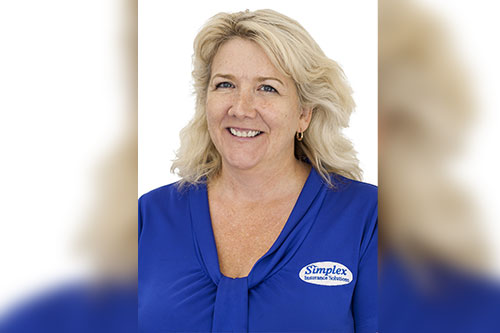

Since the novel coronavirus spread globally last month, brokers and insurers alike have felt the impacts on their businesses and the industry at large.
While federal and state governments have worked to offer measures to support businesses throughout the pandemic, big challenges still lie ahead.
“There is no doubt COVID-19 will significantly impact the insurance industry, businesses and the economy. There are classes of insurance that will be heavily affected,” said Damian Falkingham (pictured above), ANZIIF general manager industry engagement.
Globally, since the COVID-19 outbreak, some stocks have collapsed by as much as 35%, impacting insurers’ capital reserves and their ability to generate excess returns for shareholders.
“It’s been a challenging time for all sectors and insurance is no difference. There’s no doubt we will see a change in the structure of insurance in the next 12 months,” Falkingham added.
Despite these times of uncertainty, however, he’s adamant that ANZIIF, as well as the industry, is well positioned to respond with due diligence.
“We understand this is not quite ‘business as usual’,” he said. “As the leading membership body, we are well positioned to support the industry during this time of uncertainty and have a wide range of online resources and services, including articles and whitepapers in our members’ centre, online training and our new program of webinars, launching soon.”
One of the biggest challenges from the outbreak is transitioning workplaces to a remote environment. With the introduction of strict social isolation laws and an increasing amount of employees opting to work from home, a balance between flexibility and reliability is paramount.
“One of the biggest challenges and opportunities all sectors face is transitioning their workforce to a remote flexible working environment,” Falkingham said.
“We are pleased to hear feedback that the transition to these new ways of working has been embraced across the industry. This not only demonstrates our industry’s ability to work flexibly, but also the contingency plans, processes and procedures that were put in place to prepare for this transition.”
Likewise, Karen Hardy (pictured immediately below), principle at ACME Insurance Brokers, agrees that working from home has been a challenge for the industry.

“Physically, and where possible, [brokers] are operating remotely, in isolation or in line with health and social distancing guidelines. All face to face contact has been abandoned,” Hardy said.
“It will be interesting to see if these interim measures become standard operating procedure in the future.”
These sentiments are also echoed by Kay Jackson (pictured below), director of Simplex Insurance Solutions, located in rural Victoria.
In addition to having half of her workforce working from home, the company has “developed, reviewed and load tested [their] systems” to ensure that business will run as normal should they need to close their office.

“We are fortunate to be located in a rural setting with very few COVID-19 cases,” said Jackson.
“At the moment our brokerage is doing well, and we have had very few of our clients affected to the point they no longer need insurance – we have been busy making changes to coverage and ensuring clients are adequately covered with their changing situation.”
Jackson says that limiting in-person meetings along with upholding the government’s 1.5-metre social distancing rule are measures her business is taking to combat COVID-19, while also ensuring continuous business operations.
“We have closed both of our offices to the public, but where clients need to see us face to face it is by appointment only and only after we have screened them appropriately about their movements and interactions,” she said.
“So far, we have had very few meetings and have limited the numbers of participants so the space of 4sqm and 1.5-metre rules work. These meetings only occur when it is urgent, and the client genuinely needs face-to-face help. Otherwise all our business is being done over the phone and email and clients are understanding of this.”
Despite working conditions being a new and sometimes challenging situation to navigate, supporting clientele is paramount.
Taking care of clients through regular communication, ensuring they receive the right advice and understanding their individual situation are just some of the ways that brokers are working against the impacts of COVID-19.
“Ensuring we look after our clients the best we can is important right now. For brokers, this means ensuring clients are being provided with the right advice. For example, understanding that if a premise is vacant, the insurer needs to know,’ Jackson said.
“It’s very important that clients understand if they change their business activities, the insurer is informed too. Another example is when some beauty salons make videos on how to use products and sell products online instead of a client traditionally going into the salon for treatment. Now more than ever brokers need to be communicating with their clients.”
But more work needs to be done when supporting clients, especially those at risk, according to Falkingham.
“The way we engage with customers changed before COVID-19 with a focus on supporting vulnerable customers,” Falkingham agreed.
“Now more than ever, it is critical that supporting this cohort be embedded in all insurers’ practices which aligns with the implementation date of July 01, 2020.”
Falkingham added that all code signatories are required to introduce and implement a publicly available policy to support customers impacted by family and domestic violence, by July 01, 2020. Vulnerability training will also set the standard for how the industry treats those at risk.
“Customer communication has been heavily focused on addressing consumers concerns and questions around their policy for COVID-19… Now more than ever, vulnerability training will be crucial to the industry’s commitment to our clients during this difficult period,” he said.
There is also more room for assistance by state and federal governments. Hardy says that working from home is unsustainable for rural workers due to poor access to the internet in addition to the high risk of cyberattacks and data compromises.
“Internet availability, speed and reliability in regional Australia is not a given. Many of us are unable to work from home,” she said
Aside from data and cyber security, Hardy wants more information on the government’s next stages of lockdown, should the outbreak worsen. She’s also curious on how effective the government’s assistance packages will be.
“Stage 4 lockdowns – what will these look like?” she asked.
“Both federal and state assistance packages released to date are focused on maintaining employment and looking after those who have lost their livelihoods. If these measures work, we should survive.”
Jackson, however, revealed she has already seen positive results from the state and federal government’s responses to the pandemic.
“The boosting cashflow for employees, assistance for trainees and the payroll tax concessions are all helpful for our office, and all the financial government stimulus packages for businesses are certainly helping our clients keep going through this challenging time,” Jackson said.
“The instant asset write-off will also assist us in updating some of our dated assets… with the low interest rates at the moment it will save us up to $500 per month on current loans and also allow us to support other local businesses by making these purchases to keep them going.”
Indeed, it’s not all bad news for the sector – Falkingham believes that these unprecedented times has resulted in a greater level of engagement and communication from insurers to both regulatory bodies and their clients.
“On the upside, there has been a high level of engagement and communication between regulatory bodies and insurers,” he said.
“There is a real focus and commitment from both parties to ensure organisations’ systems are all capable of servicing customers during this difficult period of uncertainty.”
